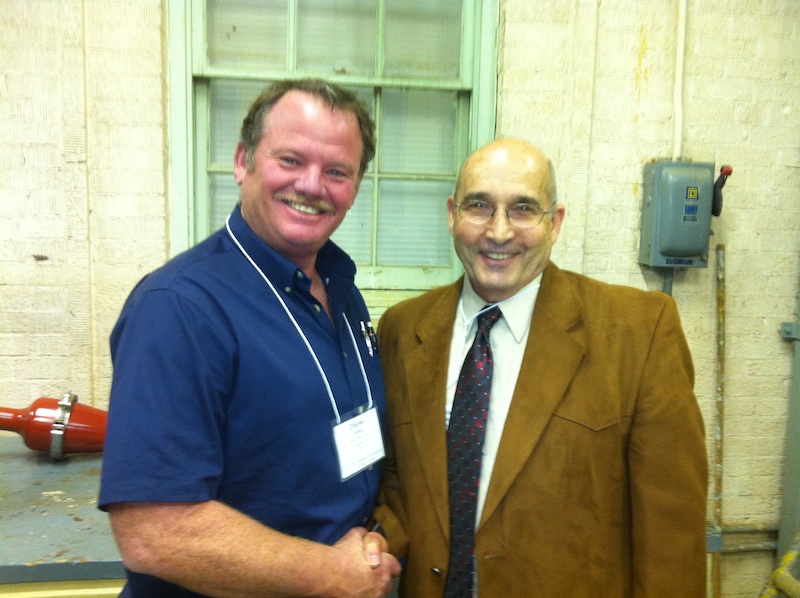
Recently, Charles Parker, President, of River Sand completed the Dredging Engineering Short Course through the Center for Dredging Studies at Texas A&M University. It was the 41st Annual Class and had a record attendance this year from professionals in the dredging industry representing the US (from Alaska to Florida) and the world (from Europe to Africa).
The class focused on several aspects of River Sand, Inc.’s dredging work including hydraulic cutterhead dredge performance and efficiency, mechanical dredging, contaminated sediment treatment, dewatering techniques, and more. Charles graduated from the class and enjoyed the experience of listening and speaking with other dredging professionals. It was an opportunity to improve upon the techniques and share some of our own that we incorporate when dredging in Georgia and the Atlanta region.
Geotextile tubes, also known as a Geotube®, are one of many innovative tools that River Sand, Inc. utilizes in our dredging projects. Hydraulic dredging often requires complicated mechanical equipment or the construction of a containment area to dewater the slurry, or sediment and water mixture, that is transported via a pipeline from a dredge. The advantage of a geotextile tube is that it increases the options for a dewatering area, which can be a parking lot, along a dam, or an open field.
Geotextile containers are made of high-strength, permeable, woven polypropylene fabric that allows excess water to pass through the walls of the tube and retains fine-grained sediments within the unit. The primary use of geotextile tubes is for dewatering for dredged slurry. However, geotextile tubes can be used as beneficial structures such as shoreline protection (revetments), dikes, breakwaters, or island creation. Geotubes are an efficient dewatering process that is effective for both large and small dredging projects, especially those with limited areas to work within. Geotubes are versatile, and have been used for decades in lagoons, lakes, rivers, and marinas. Tubes can be customized to any size, and can even be stacked or placed in mobile containers for projects with a limited footprint. Effluent from the geotextile containers is usually clear in color and often returned to the waterway without treatment. Once the solids have dewatered, the sludge dewatering tubes can be cut open and the material can be hauled away and used as fill. River Sand, Inc. can provide you with the information and budgetary costs for your dredging project, whether it is a lagoon, boat dock, pond, lake, or stream. River Sand can utilize the geotextile tubes for both industrial and municipal sludge dewatering as part of our environmental remediation projects.
River Sand, Inc. also uses a polymer injection system to increase the coagulation and flocculation of sediments thereby decreasing the time needed to dewater. These polymers are environmentally safe, and increase the viability of dredging with geotextile containers that reduce overall cost.
Recently, River Sand, Inc. worked with TenCate™ Geotube’s® research and development team to perform QA/QC analysis on their Geotube® products at a field scale. River Sand pumped material into two Geotube® containers using an 8” hydraulic dredge. The TenCate team is not only professional but make a quality product for the dewatering industry.
Contact us for more information on our services or any other dredging tools we use at River Sand Inc.